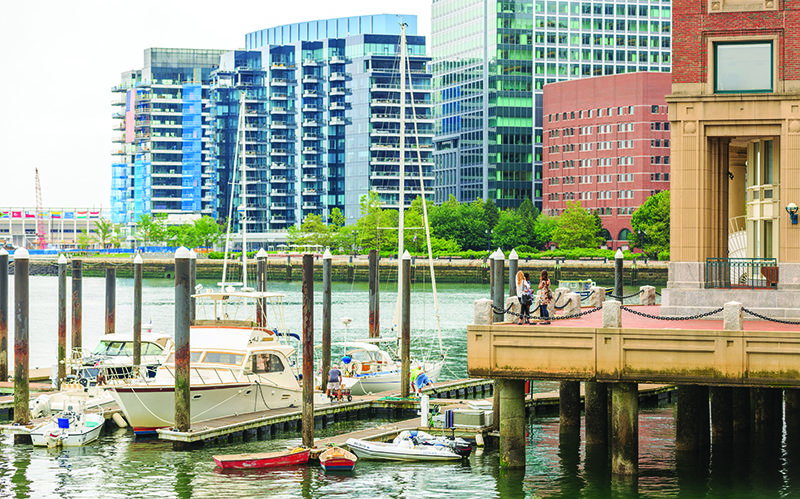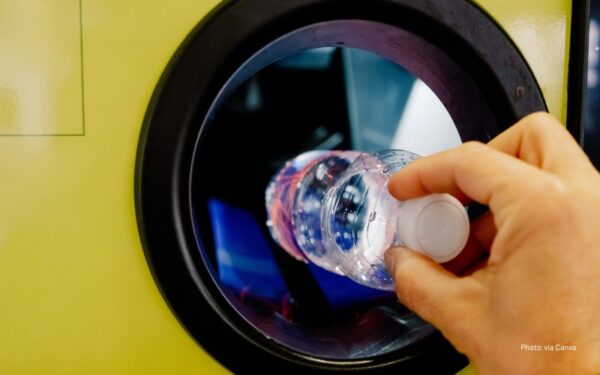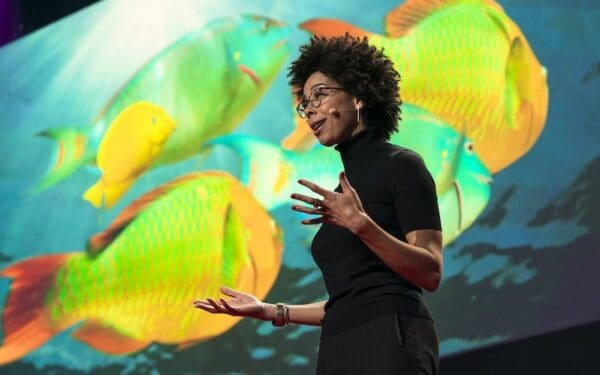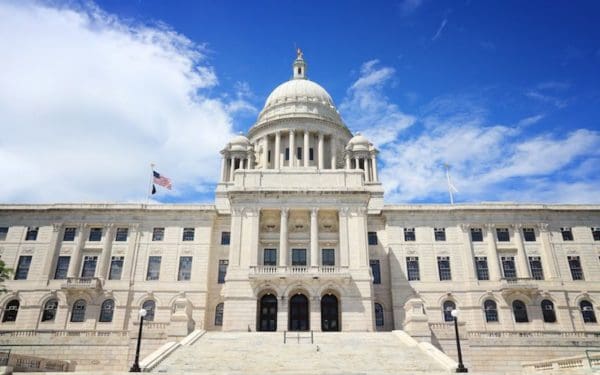
A wave of luxury development threatens to wall off the experience of Boston Harbor from the people who paid to clean it up, just as the waterfront was once literally walled off behind the city’s Central Artery expressway. Photo: EcoPhotography
It doesn’t take long for Peter Shelley to warm to his story, though he’s told it countless times before. It’s the case that has defined the career of CLF’s senior statesman, transformed the organization into a litigation powerhouse, and changed the face of Boston forever.
It’s the story of Boston Harbor, and it begins like so many modern epics – with an intrepid reporter, a three-part exposé, and a life-changing phone call.
The reporter was the Boston Globe’s Diane Dumanoski and it was December of 1982. Michael Dukakis had just been elected to his second run as Massachusetts’s governor and Kevin White was nearing the end of his 25-year career as the city’s mayor. The Sunday before Christmas, a Globe headline laid bare the city’s worst-kept secret: “Boston’s Open Sewer: Raw or treated, the sewage flows into Boston Harbor.”
Over a three-part series, Dumanoski reported on the failures of a system that allowed 43 cities and towns to dump more than 450 gallons of treated sewage and 100 tons of sludge into Boston Harbor every day. Human waste had washed up on local beaches and the harbor was dying. Fish had disappeared, and only sludge worms could survive in the muck that now covered the harbor floor.
CLF President Doug Foy read the series with horror. How had the situation gotten this far? And how had he and his small team not already known how dire it had become? He knew one thing for certain, however: CLF wasn’t going to sit back and wait for someone else to take care of this mess. Foy picked up the phone and called a young lawyer who had gotten his start at CLF five years earlier by successfully suing the federal government to stop oil drilling off Georges Bank.
Peter Shelley didn’t hesitate to accept Foy’s offer to return to CLF to lead its Boston Harbor litigation. In July of 1983, he and his family moved back to Massachusetts. A few weeks later, CLF put the Environmental Protection Agency (EPA), the Commonwealth, and the Metropolitan District Commission (MDC), the agency charged with operating the area’s failing waste treatment plants, on notice: CLF was taking them to court to force the long overdue clean-up of the city’s “harbor of shame.”
As Shelley and the CLF team dug into the situation, they knew the law was firmly on their side. “We had no concern about the blatant illegality of what was going on,” he says, as the problems were well documented, including by EPA and the MDC.
What no one fully appreciated at the time, though, was just how big the problem really was – or how long and expensive the clean-up would be. It wasn’t only one treatment plant failing. It was the entire system of how waste was handled from source to sea. The clean-up that CLF kickstarted in 1983 would ultimately take three decades to achieve. And it would succeed only because of the courage and commitment of local judges, the newly created Massachusetts Water Resources Commission, some of the world’s best engineers, and federal regulators – and, of course, CLF waiting in the wings to hold them all accountable for any lapses.
“We weren’t going to accept excuses,” Shelley says. “This was our home and we were going to fight for it.”
But as Shelley reflects on those years today, for him, the true heroes of this story are the people of Boston and beyond. Their hard-earned dollars paid for the multi-billion-dollar rebuilding of the area’s crumbling waste management infrastructure and spurred the transformation of harborfront neighborhoods from bleak to beautiful – a transformation that ironically now threatens to shut out the very people who made it possible.
Even though Boston Harbor is now dramatically cleaner, a national park gilds its waters, and a Harborwalk beckons to the public, “people around Boston still don’t connect to the Harbor and the waterfront in the way that they deserve to,” Shelley says. If the rampant development boom enveloping the Seaport and other waterfront neighborhoods continues unabated, they may never have the chance to.
“Today, the issues around the Harbor are about equity and fairness,” Shelley says. “Developers are free riders, benefiting from the people who labored and paid sewerage fees for decades to make these changes happen. Developers did not pay to clean up the Harbor or take down the Central Artery. They didn’t build the Silver Line, or the convention center, or any of the other features that have made the Harbor as attractive as it is now for private development.”
But developers are reaping huge profits from those public investments. In the process, Shelley fears, they are walling off the entire experience of the harborfront from the people of Boston – almost as it was once literally walled off behind the “iron curtain” of the Central Artery.
The problems with the Harbor now are harder to see from the outside, masked as they are behind shining new buildings put up where parking lots once ruled. But as another landmark Boston Globe series revealed just a few months ago, the Seaport is in danger of perpetuating a racist and classist past that Boston would dearly like to believe it has left behind.
That concern has galvanized CLF to fight for Boston Harbor’s future once again.
“Boston Harbor and the waterfront belong to everybody – it’s their right,” he says. “You can’t take that for granted. We need to think about what makes a great community for every Boston resident – and not just for those living in the luxury developments now typifying Harborfront neighborhoods.”
After more than 30 years, no one would fault Shelley for leaving this fight to the next generation of CLF advocates. But it’s not really in his nature do to so. “This case certainly embedded in me, and in CLF, that these things that we fight for – this quality of life for everyone – these are not battles that you just win and they’re done,” he says. “You have to keep at it because these victories are only as good as the last fight.”



